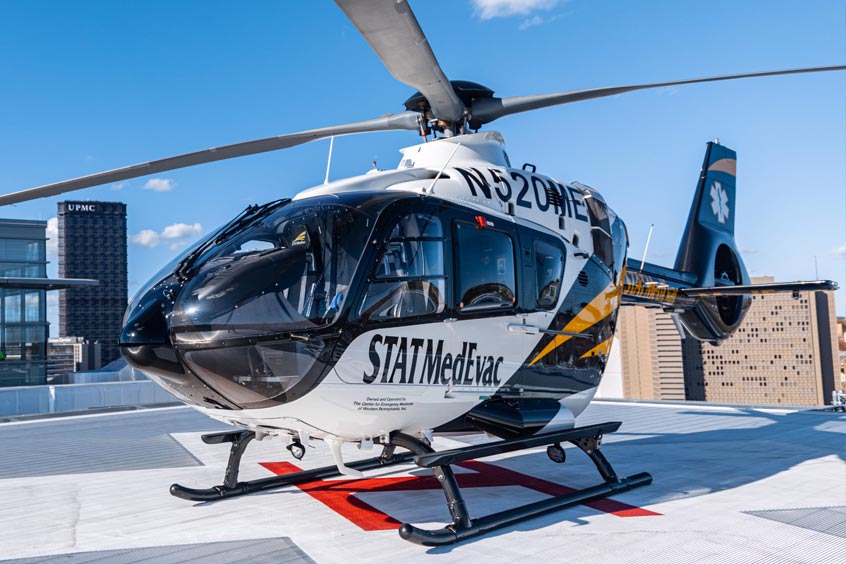ACE 2026 - The home of global charter.
 The bimonthly news publication for aviation professionals.
The bimonthly news publication for aviation professionals.

STAT MedEvac, a critical care transport system and clinical arm of The Center for Emergency Medicine of Western Pennsylvania, has launched a new rooftop helipad at UPMC Mercy Hospital in Pittsburgh, Pennsylvania.
The helipad at UPMC Mercy will replace the original structure overlooking the Boulevard of the Allies, which has been in place since the mid 1980s and has been a landmark of Pittsburgh's cityscape. The relocation is part of the ongoing construction of the state-of-the art UPMC Vision and Rehabilitation Tower at UPMC Mercy.
“We have undergone tremendous progress at UPMC Mercy over the past decade," says John Innocenti, interim president, UPMC Mercy. “This new helipad is part of the evolution of our abilities to provide world-class health care to our patients."
The new helipad provides an unobstructed viewpoint for air ambulance crews during approach and departure, saving precious time for a critically ill or injured patient. Measuring 55 ft by 55 ft and approximately 163 ft above street level, 132 ft higher than its predecessor, the new helipad offers direct and express access to care at UPMC Mercy's emergency department and Level 1 trauma services.
“The rooftop location increases safety in our approach and departure access and the improved facilities provide room for the crews to decontaminate equipment and prepare for the next patient in need,” comments James Houser, president and chief executive officer, STAT MedEvac. “These features significantly enhance our ability to quickly get patients to the care they need at UPMC Mercy.”
STAT MedEvac operates a fleet of EC135 and EC145 helicopters under a Part 135 held by the Center for Emergency Medicine of Western Pennsylvania, itself a part of UPMC, a not-for-profit organisation directed by a consortium of hospitals comprising UPMC Presbyterian Shadyside, UPMC Children’s Hospital of Pittsburgh, UPMC Hamot, UPMC Altoona, and UPMC Mercy Hospital. In 2019 it transported 889 patients to UPMC Mercy, many with serious and often life-threatening injuries suffered from automobile accidents, gunshot wounds, falls and other events.